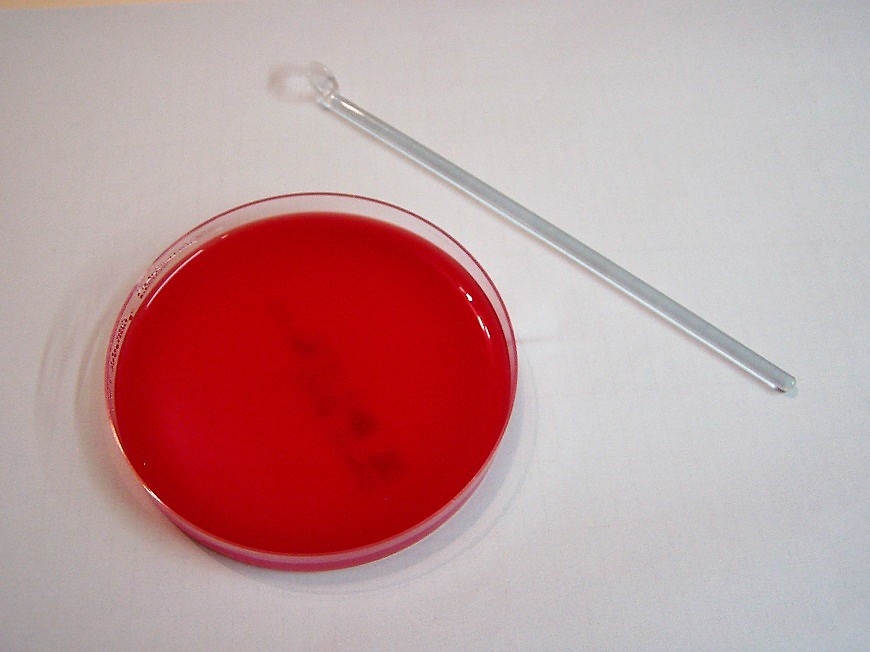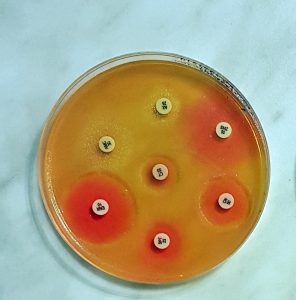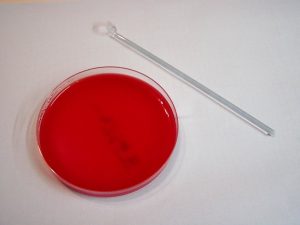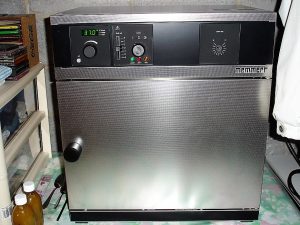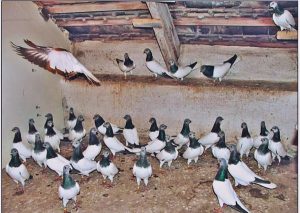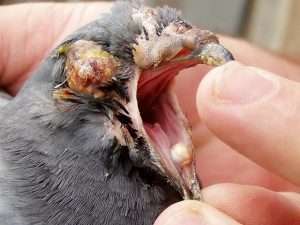My own experience over many years is that bacterial culture is very useful, it has got me out of trouble many times. I used to have my vet do it, but I have to travel a lot and it’s not cheap, so I want to do it myself. Is it possible to do it at home? Do you need very expensive equipment? If it is possible, I would often do it at home because it is a great help.
*
Bacterial culture is the process of taking a sample from a sick pigeon or pigeons, for example faeces, and placing this sample on a medium on which the pathogenic bacteria in the sample can multiply and be observed. This way we can find out exactly what bacteria and what disease we are dealing with. It makes a big difference whether, for example, a visible wing joint inflammation is caused by coli bacteria or salmonella bacteria. We cannot tell by external examination, only by bacterial culture. Since we have to treat very differently against salmonella than against a coliform, it is clear that the treatment will only be successful if we really know what we are treating against. This is where bacterial culture can help.
But bacterial culture can do much more than that. It can also tell you exactly which antibiotics work and which don’t for a given pathogen. It is useless to know that, for example, amoxicillin is supposed to be good against salmonella if the strain of salmonella that causes paratyphoid fever in your flock happens to be resistant to amoxicillin. In this case, if we treat with amoxicillin blindly, it will only kill the beneficial gut flora, but not the resistant salmonellae. So if you treat blindly, you do more harm than good.
The result of bacterial culture. Bacteria that have multiplied in the medium can be identified by the shape of the colonies that have grown and by the change in colour of the medium. In addition, the small drug discs can also show which drug is most effective against a particular bacterium.
Bacterial culture is therefore extremely useful, and in an emergency it can save many pigeons and often whole flocks. But even when there is no emergency, there are still a lot of benefits. For example, without it, preparing for the breeding season is a gamble, as treatments given in the blind often do more harm than good. It is also very useful during the racing season, as it can help to find out the cause of poor performance and the right treatment.
It also saves a lot of medication, which is as good for our wallets as it is for the health of our stock.
Below we will cover the sampling and bacterial culture techniques, and most importantly, the evaluation of the results. All this answers the question: is it possible or worthwhile to do this at home?
Equipment
So-called culture media are used for bacterial culture. These are gelatine (agar) based culture media. The sample is spread on these and the bacteria in the sample multiply on them. These media can be very diverse, depending on the sample and the bacteria involved.
A thermostat is also needed for bacterial culture. This is an electrical device that maintains a constant temperature for the media it contains.
Reagents are placed on the culture media to indicate which drug is best for the disease in question.
Last but not least, we also need sampling equipment, special containers for transporting the sample and chopsticks for smearing the sample.
All these instruments must of course be sterile, otherwise false results would be obtained.
Culture medium enriched with chicken blood, with the glass rod for applying the sample.
The sample
The sample can be many. Most of the time, the test is done from faeces, but often samples are taken from the oral cavity or from the conjunctivae. Many times we take samples from the internal organs that are dissected, from the liver, lungs, kidneys, heart and of course the intestinal cavity itself.
Thermostat or incubator. Relatively expensive equipment.
Evaluation
If the sampling and “incubation” of the bacteria has been successful, after a day or two the bacteria will multiply on the surface of the medium, forming small colonies of different sizes and shapes, visible to the naked eye. This tells the expert eye what pathogen and disease it is, how severe the infection is and which medicine is effective.
This is the most difficult part of bacterial culture, the evaluation of the results. It requires veterinary knowledge, but also specialised training and a lot of routine. The visual result alone is worth nothing. To interpret the result correctly, all the points listed below must be taken into account, otherwise the result will be wrong:
– when the sample was taken (how long before the bacterial culture)
– how many days the sample was taken
– age of the pigeons
– source of the sample – throat, faeces, internal organ, etc.
– the multiplication rate of the different bacterial species
– type of medium (simple agar, blood agar, special medium, etc.)
– presence or absence of oxygen during culture
– temperature during bacterial culture
– the duration of the bacterial culture
– whether and what medication was given before sampling
– the period (e.g. breeding period, racing period, moulting)
– whether the sample is from one or more pigeons
– presence of other bacteria in the sample
– clinical signs in the pigeon
– clinical signs in the whole flock
– the result of the necropsy
– the results of previous bacterial cultures
The amount of equipment required and, above all, the difficulty of evaluation, shows that although bacterial culture is a very useful and economical routine procedure, it cannot be carried out at home by a so-called “lay” pigeon fancier to obtain a satisfactory result. It is therefore best left to our veterinary surgeon. If he does not do it himself, he will send the sample to a suitable laboratory. Unfortunately, the downside of the latter is that we usually get the results much later than if our own vet had done it.
You will find detailed information on bacterial culture and its extreme usefulness in my books.

